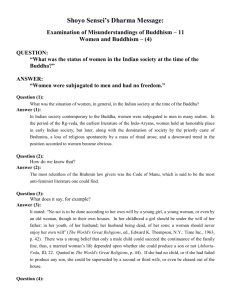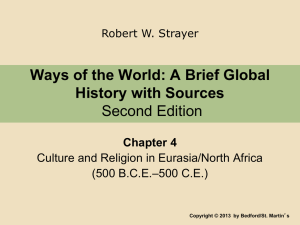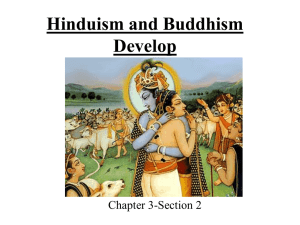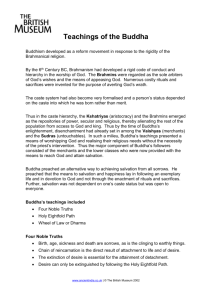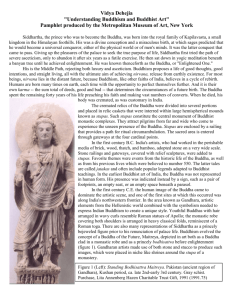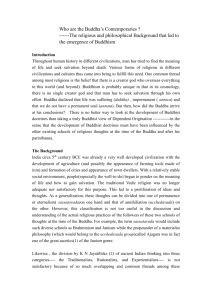Examination of Misunderstanding – 12
advertisement
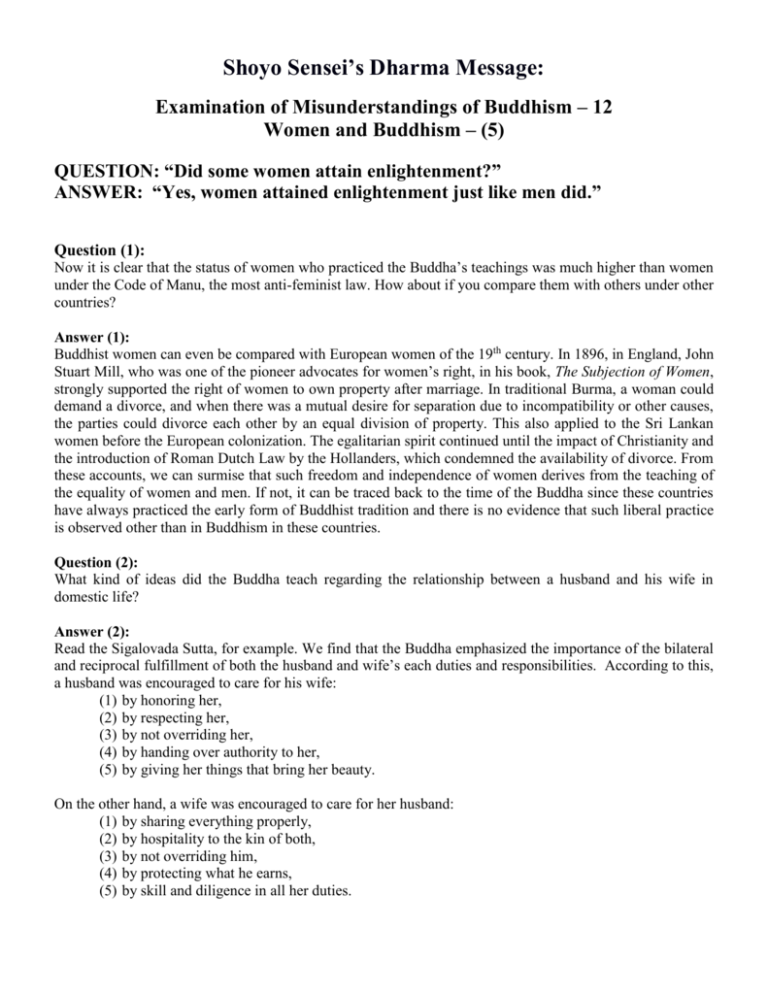
Shoyo Sensei’s Dharma Message: Examination of Misunderstandings of Buddhism – 12 Women and Buddhism – (5) QUESTION: “Did some women attain enlightenment?” ANSWER: “Yes, women attained enlightenment just like men did.” Question (1): Now it is clear that the status of women who practiced the Buddha’s teachings was much higher than women under the Code of Manu, the most anti-feminist law. How about if you compare them with others under other countries? Answer (1): Buddhist women can even be compared with European women of the 19th century. In 1896, in England, John Stuart Mill, who was one of the pioneer advocates for women’s right, in his book, The Subjection of Women, strongly supported the right of women to own property after marriage. In traditional Burma, a woman could demand a divorce, and when there was a mutual desire for separation due to incompatibility or other causes, the parties could divorce each other by an equal division of property. This also applied to the Sri Lankan women before the European colonization. The egalitarian spirit continued until the impact of Christianity and the introduction of Roman Dutch Law by the Hollanders, which condemned the availability of divorce. From these accounts, we can surmise that such freedom and independence of women derives from the teaching of the equality of women and men. If not, it can be traced back to the time of the Buddha since these countries have always practiced the early form of Buddhist tradition and there is no evidence that such liberal practice is observed other than in Buddhism in these countries. Question (2): What kind of ideas did the Buddha teach regarding the relationship between a husband and his wife in domestic life? Answer (2): Read the Sigalovada Sutta, for example. We find that the Buddha emphasized the importance of the bilateral and reciprocal fulfillment of both the husband and wife’s each duties and responsibilities. According to this, a husband was encouraged to care for his wife: (1) by honoring her, (2) by respecting her, (3) by not overriding her, (4) by handing over authority to her, (5) by giving her things that bring her beauty. On the other hand, a wife was encouraged to care for her husband: (1) by sharing everything properly, (2) by hospitality to the kin of both, (3) by not overriding him, (4) by protecting what he earns, (5) by skill and diligence in all her duties. It is assured that women play as important a role as men in a family life. Thus, it is acceptable that the modern liberal relationship between women and men derives from the early Buddhist doctrine in countries that these texts were studied and followed. Question (3): How about in the spiritual and religious level? Briefly, last time, you explained the so called the most anti-feminist law at the time of the Buddha, the Code of Manu, and concluded that it was apparent that the position of women in the Buddha’s teaching was markedly different from that then. How do we know this? Answer (3): You will find many auspicious women who played important spiritual and religious roles among the Buddha's disciples. Question (4): What important roles did those women play? Answer (4): According to the Anguttara Nikaya, for example, the Buddha named his most pre-eminent disciples and followers from thousands of them. Out of them, 42 were male monastic people, 13 were female monastic people, 10 were male lay-followers and 10 were female lay-followers. This is, indeed, an extremely significant number considering the status of women at that time, 25 centuries ago in India, which I explained in my previous sessions. Question (5): Can we know more about those women? Answer (5): Yes, the first anthology of women in the world history, called Therigatha, is full of the joyous stories of women who attained the highest stage of spiritual cultivation by the practice of the teachings of the Buddha. Question (6): I did not know about the anthology. What kind of women were they? Answer (6): They were women from all different classes, ranging from members of royal families to slaves. Question (7): Then it means that the Buddha’s teachings were open to all women regardless of social status or any other background, right? Answer (7): Yes, it does, but, it means more than that. The Buddha did not only not-subjugate women, but also strongly advocated the potentiality of women. The Buddha taught that the potential power of women was equal to that of men and that women were just as capable as men in the process of achieving the highest enlightenment. Once we put this into the contemporary Indian social context, its significance becomes even more radical. Question (8): Was it only the monastic women who practiced Buddha -Dharma? Answer (8): No. The Buddhist communion (sasana) consisted of both the male and female, and both the monastic and the lay. Not only the monastic women, but also laywomen were also very active and powerful in their spiritual path. We find in the Pali Buddhist texts many laywomen who were devoted to the practice of Dharma as lay followers and enlightened.


